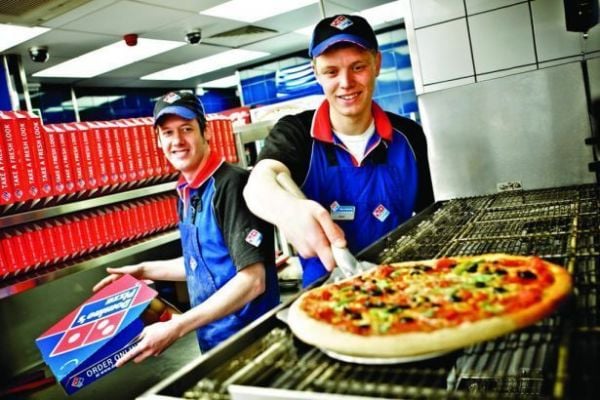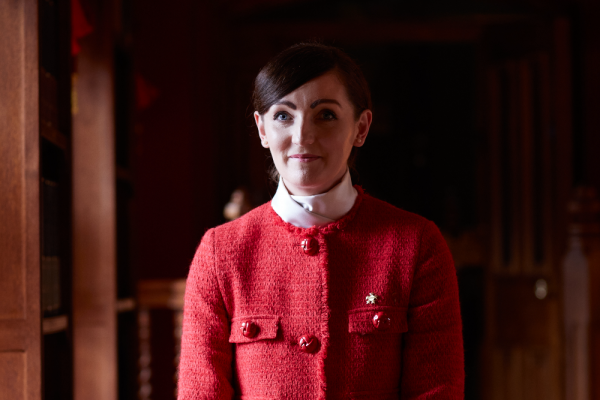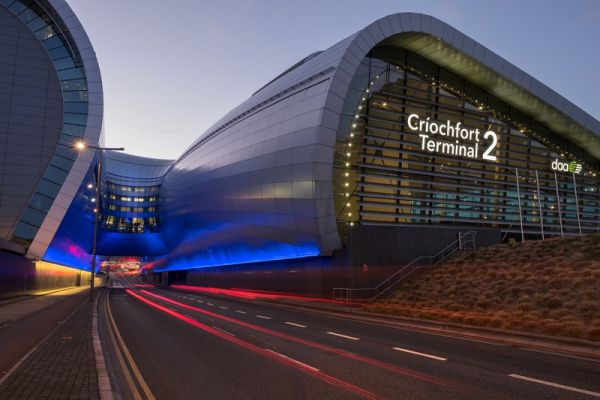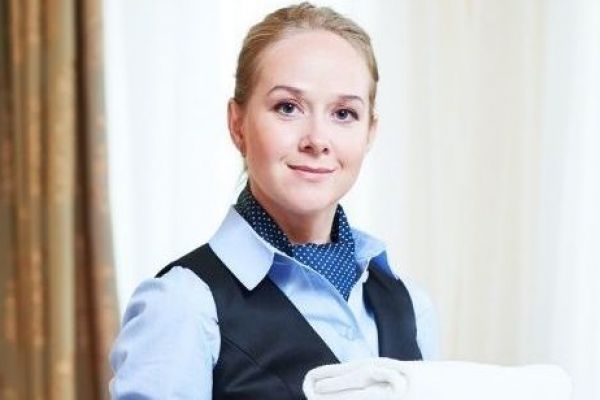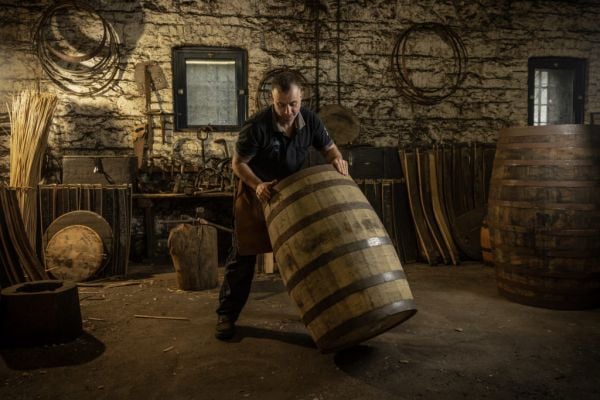It's been more than a year since Marriott International entered talks to buy Starwood Hotels & Resorts, and the speculation—about which brands will survive, what the loyalty program will look like, timing, and more—has been constant.
Now we have answers to many of your most pressing questions.
Bloomberg secured an exclusive interview with Marriott's global brand officer, Tina Edmundson ahead of a major announcement on how the company’s 30 brands will be divvied up and categorized—and what it all means for the top-tier properties.
Here’s what she had to say.
They’re Keeping All the Brands … Even If They’re Similar
Marriott was already the biggest hotel company in the world with its 19 brands—including Ritz-Carlton, JW Marriott, and Edition—and now it has 30. Amazingly, all of them are staying, and Edmundson didn’t give any indication that that would change. (We remain skeptical about that in the long run.)
“We thought long and hard about how you serve up 30 brands in a meaningful way—one that helps consumers infer both price and experience,” said the Marriott exec, who also spent 18 years working with Starwood earlier in her career, most recently as Starwood's senior vice president of brand operations, luxury, and lifestyle.
Many industry insiders assumed that the company’s three “soft” brands—brands that are made up of independent properties—would be folded into one group under one umbrella. But Luxury Collection (with such properties as the Gritti Palace in Venice or the Palace in San Francisco), Tribute Portfolio (which includes the Royal Palm in South Beach), and Autograph Collection (Pier One Sydney Harbour; Atlantis Paradise Island) all remain in place.
So, too, does Design Hotels, a collection of roughly 280 independent properties around the world that has an existing partnership with the Starwood preferred guest loyalty program. According to a rep, Design Hotels will "probably be merged with Marriott Rewards in the near future," though only half of the company's properties are currently bookable via SPG.
There Will Be Two Categories of 'Luxury'
Eight of Marriott’s 30 brands are being designated luxury. You won’t be surprised about which ones: The Ritz-Carlton, Ritz-Carlton Reserve, Bvlgari, St. Regis, Edition, the Luxury Collection, JW Marriott, and W. Edmundson says the collection was designed to cover all “luxury customers no matter their mood or travel persona.”
Generally, though, Marriott is identifying two main types of luxury travel personas. It’s characterizing Ritz-Carlton, St. Regis, and JW Marriott as “classic luxury,” while the other five brands are considered purveyors of “distinctive luxury.” This is largely an indication of style: traditional and business travel-friendly ("classic") vs. modern and boutique-y. Dip down below the luxury tier, though, and some of those characterizations blur a bit.
Autograph Collection is notably absent from the luxury group, which could represent a stellar value proposition—particularly if the future loyalty program bases redemption values according to where a brand falls on this new spectrum. The brand of independent hotels has both four- and five-star properties, but it’s being considered part of the “distinct premium” portfolio, alongside Le Meridien and Westin. Edmundson agreed that there are "some instances where a hotel that's part of Autograph Collection could be a better fit for the Luxury Collection, and vice versa," but said the company has "no plans to make any changes."
Rival Brands Such as Ritz-Carlton and St. Regis Will Still Feel Distinct
Ritz-Carlton and St. Regis once occupied opposite corners of the same boxing ring. Now they’re strange bedfellows. So how do two brands, very similar in style and taste, stop competing for the same customers and start to share? Edmundson and her team did a deep dive on this particular pair of portfolios to understand their subtler differences.
“When we think about any of our brands, we start with the consumer and look at what they value,” she said. “With Ritz-Carlton, this consumer is really leaning toward discovery. And for St. Regis, it’s really about status and connoisseurship.” Each company, she says, has a program already in place to cater to these mindsets—and those can be blown up to help articulate the differences more clearly.
“Luxury customers are looking for everything but lean more heavily on Ritz-Carlton for facilitation [to explore a new place] and on St. Regis when they want the hotel to be the destination.” Ritz, she says, is about connecting people to places, while St. Regis itself is the place where people want to see and be seen. “The St. Regis customer is looking for the hotel to serve up performances by jazz legends or signature rituals like midnight supper and St. Regis bloody marys.”
Will it work? Edmundson believes so. “Prior to the close, we talked to customers to see how these brands are being perceived. And a lot of people were talking about this unprompted. So you know it’s resonating.”
Marriott Will Learn From Starwood
“I am one of the few people that has had the opportunity to have worked in both companies, so I see this very much as a perfect marriage,” said Edmundson, who has put in 26 years of experience at the two brands combined.
“Marriott is the leading international hotelier, operationally very excellent with so much experience and success both with existing brands and launching new brands. Then you think of Starwood, which is foundationally about innovation. Their strength is in public relations and brand marketing. You put these things together, and the marriage makes for a complete whole, if you will. Competitively it will be really beneficial for us,” she said of the powerhouse combination.
Starwood’s Experiments With Technology Will Expand
In the past, Starwood has used two brands as incubators for tech innovation: Aloft and W. Between the two, Aloft has seen more experimentation: Think Apple TV, robot-based room service, and integrations with Apple's Siri or smart home technology. So what’s the future of tech innovation in the luxury brands?
“I think we need to continuously innovate at the high end,” Edmundson said. “This consumer is very discerning. We need to offer what today and tomorrow’s luxury guest is looking for. Innovation in the luxury space is absolutely a priority.”
Among the benefits of the merger, she said, is the ability to data mine across a massive global portfolio and find out what guests are looking for. She says knowing more about travelers' needs—whether they’re dictated by geography, mindset, or interest—will give the luxury brands “the ability to be at the cutting edge of the latest trends.”
That information will likely manifest itself at W and Edition properties first. These will be seen as the luxury brands most endemically suited for innovation, but Edmundson reiterated that “scale is absolutely a priority.” (Aloft will continue to be an innovation leader, though it's considered one of Marriott's "distinctive select" brands.)
But pushing an agenda of innovation will take time, luxury brand or not. “We know our guests want easy connectivity and the ability to watch their own content on the TV, or the rollout of Netflix and keyless entry. But it’s a bit early to say when and how [we will make this happen]. The technology systems for both companies were quite different,” she explains.
The Combined Loyalty Plan Details Are Still TBD
The only concession Edmundson was able to make about the SPG/Marriott Rewards loyalty program was how hard it will be to solidify. Just as tech infrastructure will require a lot of untangling, so will the terms of a new, joint loyalty program. Edmundson says this is “no trivial thing,” and Marriott is not anywhere near revealing new terms just yet. We do know that the two programs will operate independently until at least 2018, however.
Ten years down the line, she says, “I’d love to look back and for this Marriott International Luxury Group to be known as the undisputed leader in luxury, with the best global hotel portfolio, with coveted brands that really offer very personal, very individualized, very bespoke experiences. Where luxury at one point was prescribed, today we know that luxury is what you want it to be. Our luxury brands all cater to this idea in very different ways.”
News by Bloomberg, edited by Hospitality Ireland


